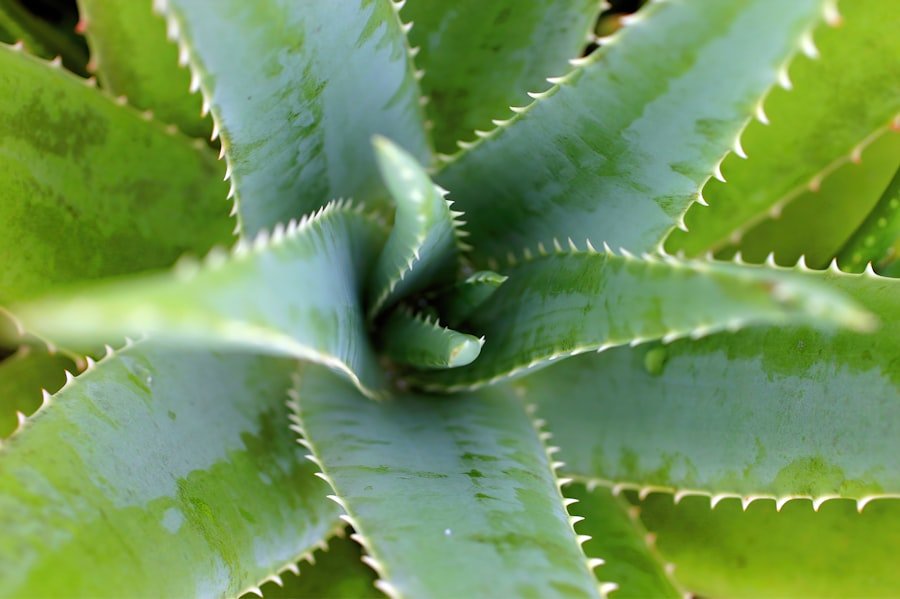Sun exposure is a double-edged sword; while it is essential for the synthesis of vitamin D, excessive exposure can lead to a myriad of skin issues. The sun emits ultraviolet (UV) radiation, which is categorized into two main types: UVA and UVUVA rays penetrate the skin more deeply and are primarily responsible for premature aging, including wrinkles and age spots. On the other hand, UVB rays are the primary culprits behind sunburn and play a significant role in the development of skin cancer.
When skin is exposed to these rays without adequate protection, it undergoes a series of changes that can compromise its integrity and health. The immediate effects of sun exposure can manifest as redness, swelling, and pain, while long-term consequences may include hyperpigmentation, loss of elasticity, and an increased risk of skin malignancies. Moreover, the skin’s response to sun exposure is influenced by various factors, including skin type, geographic location, and time of year.
Individuals with lighter skin tones tend to burn more easily due to lower levels of melanin, the pigment that provides some natural protection against UV radiation. Additionally, those living in areas with higher altitudes or closer to the equator are at greater risk due to increased UV intensity. The cumulative effect of sun exposure over time can lead to photoaging, characterized by sagging skin and a leathery texture.
Understanding these effects is crucial for developing effective sun protection strategies and post-sun care routines that can mitigate damage and promote skin health.
Key Takeaways
- Sun exposure can lead to premature aging, sunburn, and an increased risk of skin cancer.
- Post-sun care is crucial in preventing long-term damage and maintaining healthy skin.
- Choose post-sun care products with ingredients like aloe vera, antioxidants, and hydrating agents to soothe and repair the skin.
- Moisturizing and hydrating the skin after sun exposure helps to restore its natural barrier and prevent dryness and peeling.
- Aloe vera and other soothing ingredients can help to reduce inflammation, redness, and discomfort caused by sunburn.
The Importance of Post-Sun Care in Preventing Damage
Post-sun care is an essential component of any skincare regimen, particularly for those who spend extended periods outdoors. After sun exposure, the skin requires specific attention to repair and rejuvenate itself. The immediate application of soothing products can help alleviate discomfort and reduce inflammation caused by UV damage.
This step is vital not only for comfort but also for preventing long-term damage that can arise from neglecting the skin after sun exposure. By incorporating post-sun care into your routine, you can significantly decrease the risk of developing sunburns, pigmentation issues, and even more severe conditions like skin cancer. In addition to providing relief from immediate discomfort, post-sun care plays a critical role in maintaining the skin’s overall health and appearance.
The skin’s barrier function can be compromised after sun exposure, leading to moisture loss and increased susceptibility to environmental aggressors. By using products designed to restore hydration and support the skin’s natural healing processes, you can help fortify this barrier and promote recovery. Furthermore, consistent post-sun care can enhance the skin’s resilience against future sun exposure, making it an indispensable practice for anyone who enjoys outdoor activities.
How to Choose the Right Post-Sun Care Products for Your Skin

Selecting the appropriate post-sun care products is crucial for effectively addressing the specific needs of your skin after sun exposure. When choosing products, it is essential to consider your skin type—whether it is oily, dry, sensitive, or combination—as this will influence how your skin reacts to various ingredients. For instance, individuals with oily or acne-prone skin may benefit from lightweight gels or lotions that provide hydration without clogging pores.
Conversely, those with dry or sensitive skin may require richer creams or balms that offer intense moisture and soothing properties. In addition to considering your skin type, it is important to look for products that contain beneficial ingredients known for their healing properties. Ingredients such as hyaluronic acid can help attract moisture to the skin, while antioxidants like vitamin C and E can combat free radical damage caused by UV exposure.
Furthermore, products containing anti-inflammatory agents such as chamomile or calendula can provide additional relief from redness and irritation. By carefully selecting post-sun care products tailored to your individual needs, you can enhance your skin’s recovery process and promote a healthier complexion.
The Role of Moisturizing and Hydration in Post-Sun Care
| Moisturizing and Hydration in Post-Sun Care | |
|---|---|
| Benefits | Keeps the skin hydrated and prevents peeling |
| Recommended Products | After-sun lotions, aloe vera gel, hyaluronic acid serums |
| Frequency | Apply moisturizer multiple times a day, especially after sun exposure |
| Tips | Drink plenty of water, avoid hot showers, and use gentle cleansers |
Moisturizing and hydration are fundamental aspects of post-sun care that cannot be overlooked. After sun exposure, the skin often experiences dehydration due to increased transepidermal water loss. This loss can lead to dryness, flakiness, and a compromised skin barrier, making it essential to replenish moisture levels promptly.
A well-formulated moisturizer not only hydrates the skin but also helps lock in moisture, creating a protective barrier that prevents further water loss. This is particularly important after sun exposure when the skin is more vulnerable to environmental stressors. Incorporating hydrating ingredients into your post-sun care routine can significantly enhance your skin’s recovery process.
Look for products that contain humectants like glycerin or aloe vera, which draw moisture into the skin and help maintain hydration levels. Additionally, occlusive agents such as shea butter or ceramides can provide a protective layer that seals in moisture and supports the skin’s natural barrier function. By prioritizing hydration in your post-sun care regimen, you not only promote healing but also improve your skin’s overall texture and appearance.
The Benefits of Using Aloe Vera and Other Soothing Ingredients
Aloe vera has long been celebrated for its soothing properties, making it a popular choice for post-sun care. This succulent plant contains a wealth of beneficial compounds, including vitamins, minerals, and antioxidants that work synergistically to calm irritated skin. Its natural anti-inflammatory properties help reduce redness and swelling associated with sunburns while promoting healing at a cellular level.
Additionally, aloe vera is rich in polysaccharides that provide hydration and support the skin’s moisture retention capabilities, making it an ideal ingredient for restoring balance after sun exposure. Beyond aloe vera, there are several other soothing ingredients that can enhance post-sun care routines. For example, chamomile extract is known for its calming effects on the skin and can help alleviate discomfort caused by sunburns.
Similarly, calendula oil possesses anti-inflammatory properties that aid in healing and reducing irritation. Incorporating these soothing ingredients into your post-sun care products can create a multi-faceted approach to recovery, ensuring that your skin receives the nourishment it needs to bounce back from sun exposure effectively.
Tips for Healing Sunburn and Reducing Inflammation

Healing sunburn requires a combination of immediate care and ongoing treatment to ensure optimal recovery. One of the first steps in addressing sunburn is to cool the affected area; this can be achieved through cool baths or compresses that help alleviate pain and reduce inflammation. It is crucial to avoid hot showers or baths during this time, as heat can exacerbate irritation and prolong healing.
Additionally, applying soothing lotions or gels containing aloe vera or other calming ingredients immediately after cooling can provide relief while promoting healing. In addition to topical treatments, staying hydrated is vital for healing sunburned skin from within. Drinking plenty of water helps replenish lost fluids and supports the body’s natural healing processes.
Over-the-counter pain relievers such as ibuprofen or acetaminophen can also be beneficial in managing discomfort associated with sunburns. It is essential to avoid picking at peeling skin or blisters, as this can lead to infection and further complications. By following these tips for healing sunburns and reducing inflammation, you can facilitate a smoother recovery process while minimizing long-term damage.
The Long-Term Effects of Neglecting Post-Sun Care
Neglecting post-sun care can have significant long-term consequences for your skin’s health and appearance. One of the most concerning outcomes is an increased risk of developing skin cancer due to cumulative UV damage over time. Regularly exposing your skin to harmful UV rays without proper protection or aftercare can lead to mutations in skin cells that may eventually result in malignant growths.
Furthermore, chronic neglect of post-sun care contributes to premature aging signs such as fine lines, wrinkles, and hyperpigmentation—issues that may become increasingly difficult to address as time goes on. In addition to aesthetic concerns, neglecting post-sun care can compromise the overall health of your skin barrier. A weakened barrier function makes the skin more susceptible to environmental aggressors such as pollution and allergens, leading to increased sensitivity and irritation.
Over time, this can result in chronic conditions like eczema or rosacea that require ongoing management. By understanding the long-term effects of neglecting post-sun care, individuals can better appreciate the importance of incorporating these practices into their daily routines for healthier skin.
Creating a Post-Sun Care Routine for Healthy, Protected Skin
Establishing a comprehensive post-sun care routine is essential for maintaining healthy, protected skin after sun exposure. Start by cleansing your face gently with a mild cleanser to remove any sweat or sunscreen residue without stripping away essential moisture. Following cleansing, apply a hydrating toner or essence infused with soothing ingredients like rose water or chamomile extract to prepare your skin for subsequent treatments.
This step helps restore balance while enhancing absorption of subsequent products. Next, incorporate a targeted serum rich in antioxidants or hydrating agents such as hyaluronic acid into your routine. This will provide an extra layer of nourishment while combating free radical damage caused by UV exposure.
Finally, seal in all the benefits with a nourishing moisturizer tailored to your skin type—this will help lock in hydration while supporting your skin’s natural barrier function. For those who have experienced significant sun exposure or sunburns, consider adding a soothing gel containing aloe vera or calendula as an additional layer of protection before applying moisturizer. By following this structured post-sun care routine consistently, you can promote optimal recovery while ensuring your skin remains healthy and resilient against future sun exposure.









